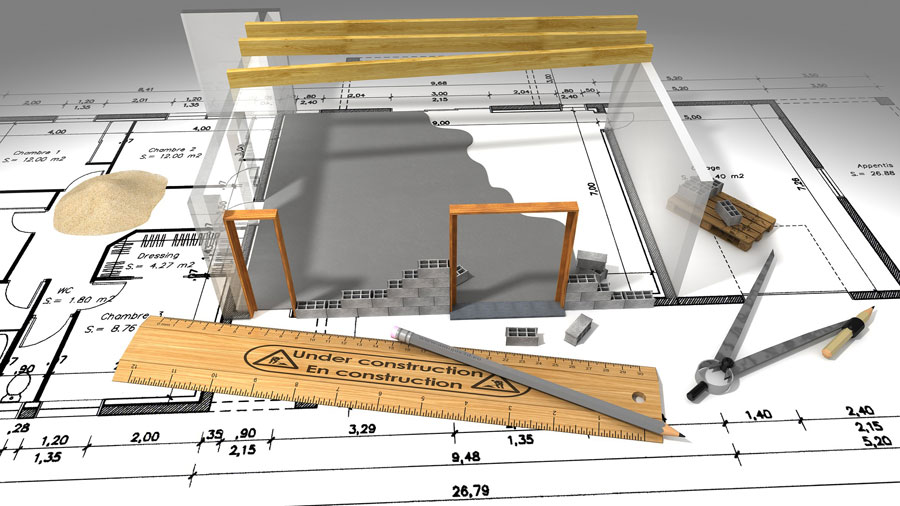There is no doubt that technology has changed the world. There are so many industries and aspects of our lives that advances in technology have impacted, and there are no exceptions in the architectural industry. This is not new for architecture, since in this industry innovations are constant; the designs are innovative, and there is dreaming and making the vision for the future a reality. However, technology did help this industry to achieve bigger goals, and dream even bigger and has made better tools for architects. So, let’s see how technology has transformed this industry specifically.
Technology and Architecture
Back in the day, architects had to perform their tasks and work on projects manually. There was a lot of rendering, hand drafting, and sketching to create plans, sections, elevations, etc. Additionally, architects also had to meet their clients in person, do site visits, do studies, and every other aspect that was conducted in real-time. All of this can significantly slow down the design process, as well as many other processes, which meant that the projects took years to complete.
However, with the advances in technology, everything became faster and more efficient. Technology offers remote communication, and 3D views, and everything from consultations to planning and drawing can be done with the use of technology.
Improved Communication and Collaboration
Architecture requires a lot of communication between people. Also, that communication has to be consistent and reliable. From pitches to winning clients and day-to-day communication there are a lot of opportunities where that communication could break. Back in the day, all of that had to be done face-to-face which could slow down the progress of projects. However, today and with technology, the communication processes are much easier, faster, and more consistent.
Besides offering various instant messaging channels and the internet, technology has made presentation and communication with clients easier and better. A great thing that technology brought is 3D animation and projects used in this industry. When you rely on 3D architectural animation services, you can get augmented reality house tours, see projects and plans in progress, and even a 3D view of a completed building or a house. This lets the clients see the details and it makes it easier for professionals to correct the designs when needed.
Reduced Costs
The architectural industry often has high costs, but like any other company and business, the owners want to see the button line reduced. This is where technology helps since using VR or 3D printing can significantly lower costs. This is mainly because you can see and fix any errors in the design or project before you construct it, so you don’t have to start all over again or use the extra money for fixing. And not only does technology makes the whole process cost-effective, but it also makes it much more convenient from start to finish.
Apps and Cloud Services
Technology in this industry can take many forms, and one such form is the smartphone. There are more and more apps available for architects and developed by architecture software developers. The apps can cover many parts of projects – from conception to completion – and more and more architects are learning to rely on them. This also helps them reach their clients better and achieve better communication.
What’s more, the touchscreen technology makes the whole process easier since you can use it to directly sketch into software and simply translate it into 3D modeling apps. BIM or building information modelling can save a lot of time, increase transparency, and record any changes, and it also enhances details and makes collaboration much easier. In addition to the increase in the use of BIM technology, the need for cloud-based services is also on the rise. There are now cloud-based design products and services that make it easier and possible for everyone to work on projects and access all needed information at all times.
Generative Design
This is one of the latest trends in architecture. The generative design follows natural designs and processes and these patterns and inputs are applied to forms of commutation. This new trend and technology can create thousands of unique options for designers. A lot of factors are built into the software, such as the budget, materials, colors, texture, manufacturing, and many more.
When you build in such parameters, technology can use them and create a generative design solution, which offers potential solutions for architects. With this, designers can learn about each design and its specifics, and this really contributes to making creative and innovative problem-solving designs and solutions.
It is obvious that technology brought many benefits to the architectural industry. And thanks to technology, processes are simpler and quicker and we can look forward to an even brighter future.
Eve Anderson is a marketing specialist turned blogger. Interested in sports and exciting travel destinations. Love to share content that can inform people.
Author Bio
Eve Anderson is a marketing specialist turned blogger. Interested in sports and exciting travel destinations. Love to share content that can inform people.





